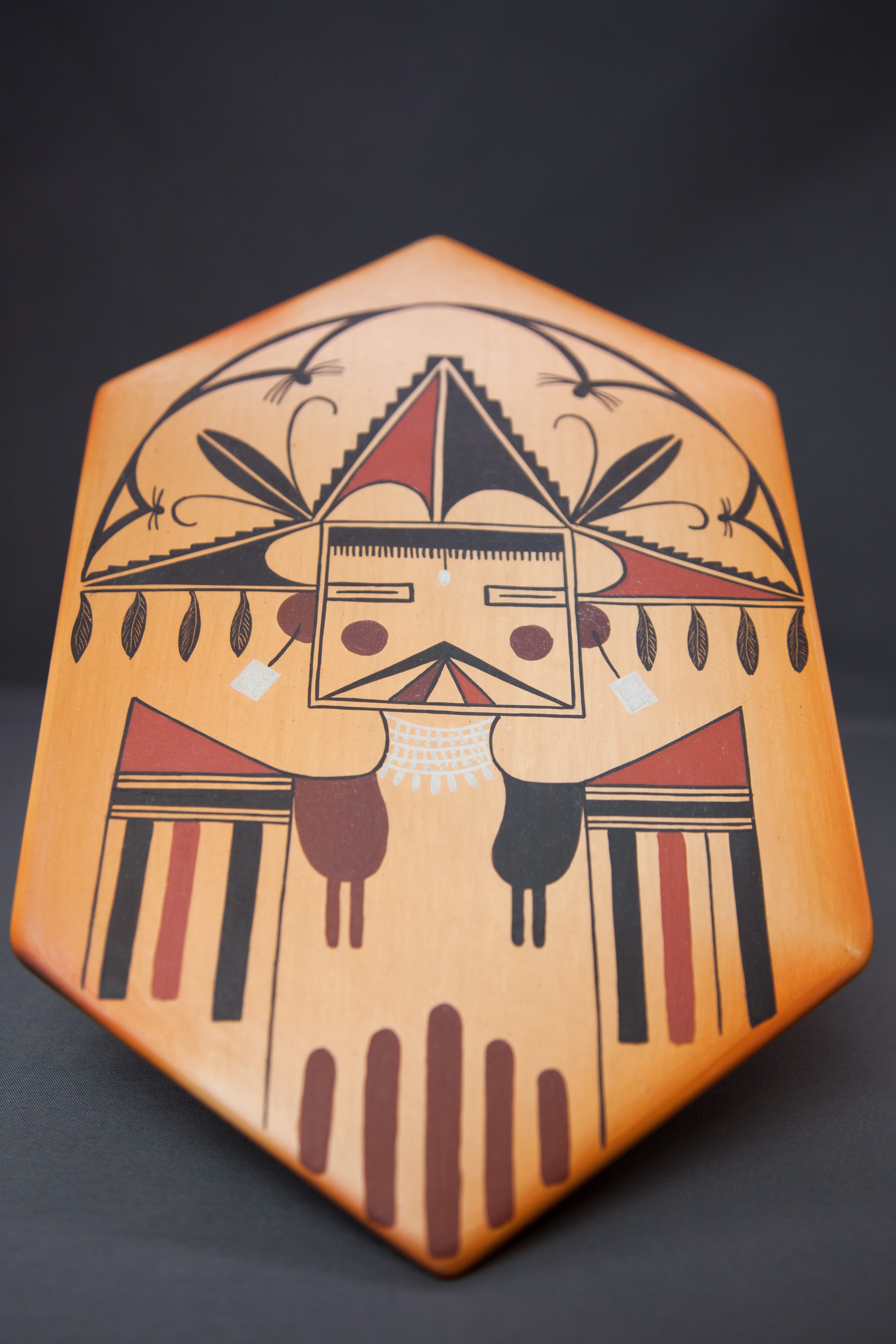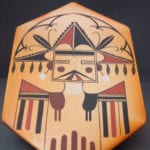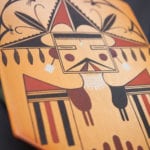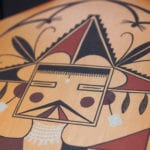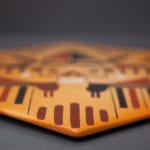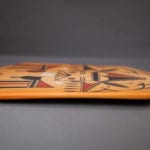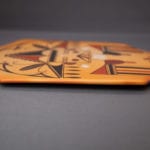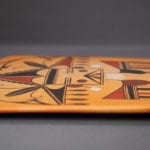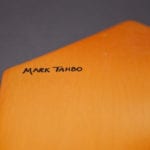This tile is extraordinary by every criterion: size, shape, blushing and painting.
The design is instantly recognizable as a Polik’Mana, but it is a modern interpretation of what can be a fairly static traditional design. (See other Polik’Mana renditions under “kachinas and other spirit beings” in the Category List.)
The hexagon shape of the tile was used by a small number of potters about 1900, but is unusual (Messier, 2007:26). The size and thinness of this tile is extraordinary, however, unlike anything known among historic tiles. Only Gwen Setella currently makes tiles this large and thin. Although tiles would seem like a simple shape, they are difficult to make because the flat sheet of clay tends to warp and curl when drying. Tile 2017-03 is relatively, but not completely flat. Mark was among the first potters to control his fires sufficiently to deliberately blush his pottery. Such attractive variations are seen on the front and particularly the back of this tile.
Mark’s tile incorporates all of the conventional elements of a Polil’Mana design: striped shirt, turquoise necklace and earrings (here rendered in white), a triangular “Darth Vader” mouth, slit eyes forehead band with a turquoise pendant (again in white) and an elaborate tabula consisting of alternative stepped-clouds and abstracted squash blossoms. It is interesting to compare Mark’s rendition with the four renditions of the Polik’Mana by Nampeyo in this collection (2009-17, 2014-10, 2014-15 and 2017-04).
The Polik’Mana has different personages. The red dot on her c heek on this tile indicate her female gender, as is also true of the renditions on 2009-17 and 2013-08 in this collection.
The Zuni, with whom the Hopi share a history of cultural contact, often used an arched “house” design over the top of deer depicted on their pottery. Nampeyo used this Zuni device on a jar now in the Denver Art Museum. A Hopi potter, probably of Zuni heritage, used such an arch over birds on jar 2011-28 made about 1900. I don’t know if Mark was thinking of such precedent when he painted tile 2017-03, but the arc h he painted over the tabula on tile 2017-03 is similar to this Zuni element. Above each of the four squash blossom leaves a whiskered ball is suspended from the Zuni arch. Their form is similar to the whiskered ball Nampeyo often used and which may represent feathered “patos,” or prayer offerings. (See 1993-04 and Patterson,1994:161).
Tile 2017-03 is featured in an article by Thomas Lull published in the December/January 2017 issue of Native American Art (2017:100).

